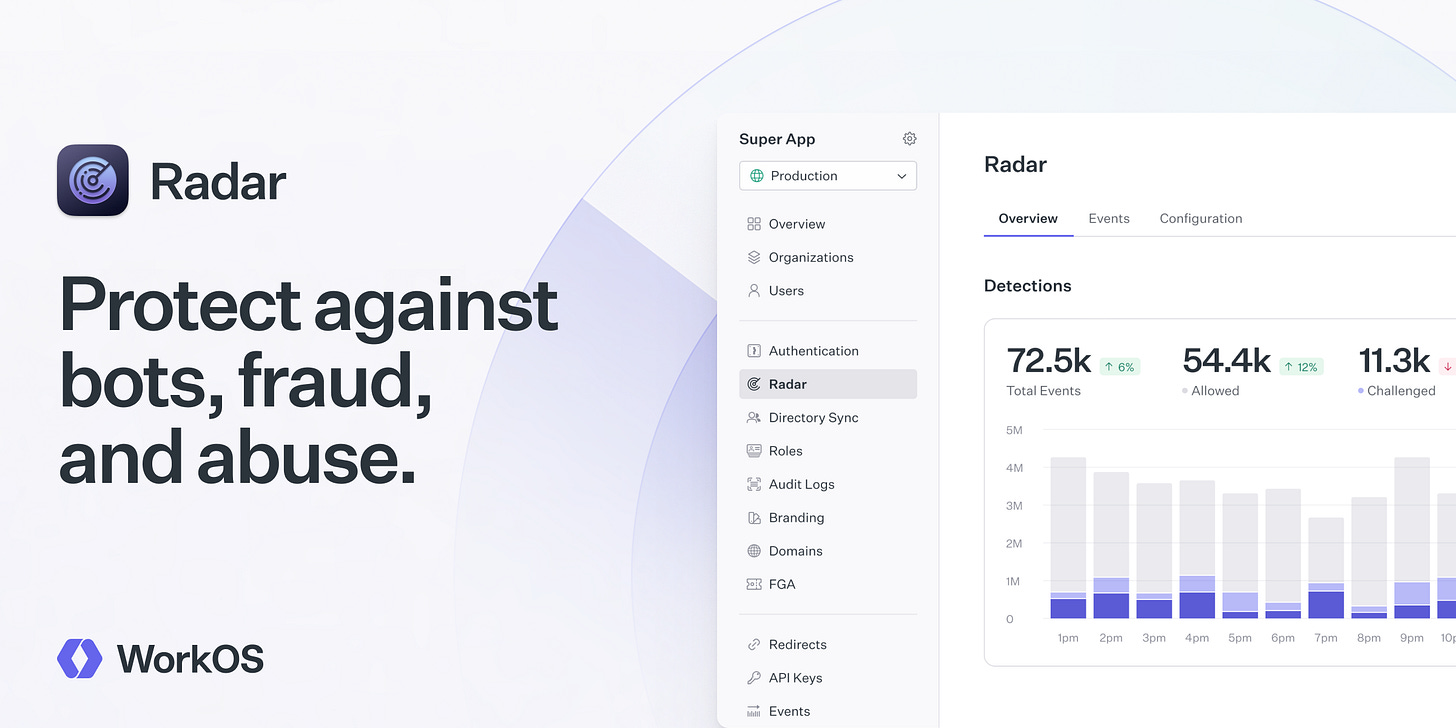Arc Notes Weekly #98: Turbine
This week, Explore how AWS uses formal methods, what Kubernetes 2.0 could fix, and how databases store tables on disk. Plus: agentic coding, better AI docs, and 9 years of debugging lessons.
This week, dive into the internals of database storage, explore how AWS uses formal methods to ensure system correctness, and learn what a Kubernetes 2.0 might look like. Plus, get practical advice on building AI agents, debugging with confidence, and writing docs that help both humans and AI.
Sponsor Spotlight: WorkOS AuthKit + Radar: Auth with Real-Time Threat Protection Auth isn’t just login—it’s sessions, MFA, SSO, and threat prevention. AuthKit + WorkOS Radar integrates cleanly with your existing auth stack—fully hosted, production-ready, and built for scale.
Enjoy this week's round-up!
— Mahdi Yusuf (@myusuf3) or LinkedIn
👋🏾 You are reading Architecture Notes - Your Sunday newsletter, which curates best system design and architecture news from around the web. We would appreciate you sharing it with like-minded people.
Articles
Mastering AI Documentation: Best Practices for Clarity and Precision
Discover how to create documentation that not only helps human readers but also enhances AI performance! This guide dives into best practices for writing clear, structured content that improves AI's ability to generate accurate answers, highlighting the importance of chunking, semantic clarity, and self-contained sections.Agentic Coding Recommendations
Dive into Armin Ronacher's exploration of agentic coding, where he shares his unique workflow using Claude Code, the importance of simplicity, and why Go is his top choice for backend projects. Discover how he optimizes tool usage and the role of AI in his development process, all while keeping an eye on the rapidly evolving landscape of coding with agents.Exploring the Unique Design of Google's TPUs
Discover how Google's TPUs, with their unique design philosophy, achieve remarkable scalability and energy efficiency, setting them apart from traditional GPUs. Dive into the co-design of hardware and software, including the XLA compiler, and explore the intricate details of TPU internals and their impressive throughput capabilities!WorkOS AuthKit + Radar: Scalable Auth with Real-Time Threat Protection
Auth isn’t just login. It’s managing sessions, rotating tokens, supporting MFA, integrating SSO, and defending against abuse.
WorkOS AuthKit offers a fully hosted UI and API for sign-up, password resets, MFA, and SSO—production-ready and easy to integrate into any architecture.
WorkOS Radar adds real-time detection for credential stuffing, brute force, and more. No scripts or custom logic required.
Integrates cleanly with your existing auth stack and scales with you from day one.
Get started with AuthKit + WorkOS Radar →
Unveiling the Secrets of How Databases Store Tables on Disk
Ever wondered how your database tables are stored on disk? Dive into the world of pages, heap files, and indexes to uncover the magic behind database storage and optimization. Discover how databases use primary keys and hidden row IDs to efficiently manage data, and learn why understanding these concepts can make or break your database performance!Why Your AI Coding Assistant Struggles and How to Improve It
AI coding assistants can be both impressive and frustrating, excelling at certain tasks while faltering at others. This article explores how understanding the strengths and weaknesses of AI can help you tailor tasks to fit its capabilities, ultimately boosting productivity and satisfaction with AI-assisted coding.9 Years of Debugging: Lessons Learned
Henrik Warne reflects on nine more years of tackling tricky bugs, sharing insights into coding, testing, and debugging challenges. From empty cases to good logging practices, discover how these lessons can help you avoid common pitfalls in software development!Building Effective Agents
Discover how Anthropic's experience with LLM agents reveals that simplicity and composable patterns often outperform complex frameworks. Learn practical tips for developers to build effective AI agents without unnecessary complexity.Imagining Kubernetes 2.0: What Could Be Improved?
Kubernetes has revolutionized how we manage infrastructure, but it's not without its flaws. This article explores potential improvements for a hypothetical Kubernetes 2.0, including ditching YAML for HCL, allowing etcd swap-outs, and introducing a native package manager. Dive into the future of Kubernetes and see what changes could make it even more powerful!Projects
canine
Discover Canine, a user-friendly deployment platform that combines the power of Kubernetes with the simplicity of Heroku, offering seamless GitHub integration, real-time monitoring, and more for small teams. Check it out to see how it can streamline your deployment workflows!harper
Tired of slow and privacy-invading grammar checkers? Meet Harper, the open-source, Rust-powered tool that checks your grammar offline in milliseconds, all while keeping your data private. Say goodbye to expensive and overbearing alternatives!How AWS Ensures Systems Correctness with Formal Methods
Discover how Amazon Web Services uses formal methods like TLA+ and the P programming language to eliminate bugs early and optimize performance, ensuring reliable and secure services. This article explores AWS's evolution in correctness practices, highlighting the benefits of formal methods in delivering complex services with high confidence.




